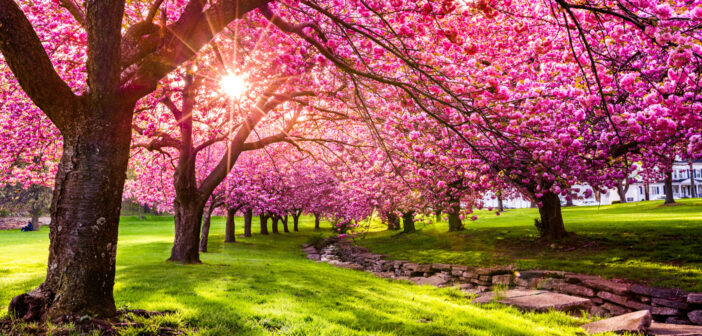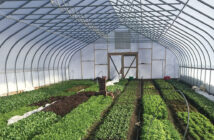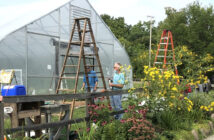Fruit should be a staple of everyone’s diet. Besides being extremely tasty, fruit is a good source of vitamins and minerals and fiber, it’s low-calorie and low-fat, can protect the body against disease and is quick and easy to eat.
Growing fruit trees can be a highly rewarding but delicate process. Getting a good yield depends on a number of factors including climate, pollination, location, planting detail and time.
Here are a few suggestions to help you plant productive and healthy fruit trees:
1. Do Your Research.
Unfortunately, you can’t just plant any ol’ fruit tree and expect success. If you want to plant an orange tree in Michigan, you are going to be disappointed – might as well plant a palm tree and hope for coconuts. Your region’s climate plays a large role in what will be successful. Also, survey your land. Do you have enough land with enough direct sunlight? Fruit trees need at least eight hours of sunlight a day and, depending on type, you may need to plant more than one for pollination. (Some trees are self-pollinating; check the label before purchase.) Do you have enough space for more than one? Most trees should be placed at least ten feet apart, although smaller distances can still be productive. Well-drained soil is also a must. (Fruit trees won’t prosper in a bog!)
2. Provide a Little Extra TLC.
As noted earlier, fruit trees are delicate. Care during the first few years will affect shape, strength, yield and lifespan. From initial hole depth to support and pruning, fruit trees are a commitment for the immediate years after planting. Do you have what it takes? Fruit trees play a long game before finally providing fruit; but once they do, you’ll have more than you can handle.
3. Pruning is a Must.
Again, fruit trees are a commitment and proper pruning is required. Pruning can give leaves better access to light and minimize messier growth to yield bigger, better fruit. Pruning also encourages solid root growth as the tree searches for more nutrients for replacing cut branches. (Tip: remove dead wood and branches that cross each other.)
4. Mulch & Fertilize.
Mulch trees after planting and again every spring. Make sure to leave room around the base of the trunk. (Mulch piled around the base of a tree can produce rot!) Continue to use a high-quality fertilizer throughout the growing season.
5. Watch for Problems.
Be on the lookout for blight or insect damage. Check the bark periodically to be sure that local wildlife is not peeling it away. After all, you don’t want to put in all that work and care just to have Mother Nature ruin your endeavor. Natural remedies are available for blight and pests, and if animals are getting to the bark, it might be time for fencing.
After you have made up your mind on type and are ready to commit to your chosen tree(s), the next step is choosing a winner at the local nursery. Look for a tree with good leaf cover, no damaged bark, no sign of disease and the lower limb structure you are looking for. Once purchased, it’s time to plant.
Quick Planting Tips
- Dig your hole 2-3 times as wide as the root ball and up to two inches deeper. Do NOT plant too deep! Make sure the graft union between the trunk and the root ball is just above the soil.
- Splay roots out as much as possible before planting. Do NOT add fertilizer to the hole. (Roots need to branch out to find nutrients and adding fertilizer will keep them compact.)
- Loosen the sidewalls of the hole to make it easier for the roots to break through.
- Newly-placed trees need staking for at least the first two years after planting.
- Water immediately after planting by slowly adding 2-5 gallons of water and do it again the next day. Afterwards, provide a generous amount of water weekly, and increase in dry weather.
Best Fruit Trees for Local Climate
- Apple – A Michigan staple. Apple trees grow well just about everywhere in the lower half of the state. Time to fruit production: 4-5 years.
- Pear – Another fruit that does well in lower Michigan. When it comes to success, pears are a solid No. 2 and are becoming more popular as apples continue to rule the land. Time to fruit production: 4-6 years.
- Peach – Common in Michigan’s southwest corner, peaches are a little harder to grow in our neck of the woods. It can be done and can be considered a significant achievement. You will be the envy of your neighborhood for harboring a rare bounty, indeed. Time to fruit production: 2-4 years.
- Cherry – Michigan produces the bulk of the country’s tart cherries, but unfortunately, they don’t do as well in the lower half of the lower peninsula. Again, it can be done but it might be a bit of a battle. Sweet cherries are an even bigger challenge. There are a few cherry orchards in southeast Michigan, so give it a shot. Time to fruit production: 3-5 years.
So, you can hop on down to your local grocery store or farmers’ market and grab a bushel of your favorite fruit, or cut out the middleman, be patient … and grow your own!








